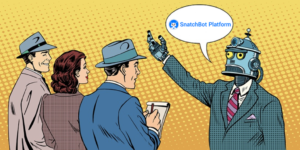Intelligent chatbot solutions managed to redefine several aspects of business to consumer communication. When chatbots understand humans well, several business metrics can show improvement: A reduction in labour cost – easily $300K per annum on a medium sized business relying on 16 people to deliver customer service. This, coupled with a 25% increase in customer acquisition thanks to real-time responses as opposed to the typical 8 hour delay in response time, created a compelling case.
The new reality today, is that companies have three choices: Save a lot of money and have an automated solution that can really integrate and relate well with humans, save just a bit of money and have humans in offshore call centers read things from a script pretty much like a bot, or pay top dollar to have local staff in San Francisco, London and Tel Aviv offices for the sake of basic communication. Option 1 seems the way to go, especially if you can identify and tap into the best available solution.
How SnatchBot emerged as a leader in digital communication:
Two brothers, Avi and Henri Ben Ezra, have almost a decade of experience in the telecoms industry. They realized that if chatbots are going to be accepted and respected by business leaders, it will need to learn the human language quite well and provide relevant responses as opposed to mere generic interaction. Besides the fact that people do not want to download additional apps but prefer to use their own communication channels like Messanger, Line and Wechat to interact with brands, there were also other considerations.
They also understood that bot developers need not re-invent the wheel and that a bot building platform that does not have prohibitive costs, will encourage greater participation which will in turn spur more innovation in this field.
What followed, was the release of their highly popular chatbot platform, SnatchBot. With SnatchBot users can access already developed bots that are sophisticated, making use of natural-language conversational. These bots are highly engaging from a user experience perspective and provide lifelike conversational interactions across the widest variety of communication channels.
The results speak for itself as the market embraced the solution: Only a few months after it’s release, SnatchBot is already used by mainstream brands with highly innovative tech departments, such as Allianz, Uber, Vodafone and Veolia.

SnatchBot meeting key market demands through design and innovation:
Just as any non-coder can build a website on the WordPress platform, so can those who do not have coding skills build a chatbot using the SnatchBot platform. Without technical skills, a user can now build a bot that with advanced features such as sentiment analysis and deep-learning algorithms. Since the platform automatically scales depending on the volume of data that is processed over time, there is no need for infrastructure management.
Since the platform eliminates the need to re-invent the wheel, as one would expect, it offers a complete library of ready-to-use bots which can be accessed via the SnatchBot store – which is a marketplace for chatbots. This is already powering multiple sectors, such as banking, travel and tourism, customer service and e-commerce.
Conclusion:
One of the world’s leading telecoms giants Carlos Slim once said: “Statistics apply to large numbers”. Just what can we learn from big numbers then? As big banks and institutions now report back on significant improvements in their business metrics, it is time for businesses of all sizes to seize on this historic opportunity to leverage chatbots. We’re at a point now where innovative solutions like SnatchBot are starting to outperform outsourced call centers on several metrics.
In terms of how well SnatchBot will understand humans: Henri Ben Ezra, the CEO of SnatchBot had a good answer on this: “My expectation while leading Snatch Group is to teach technology to speak and understand human language”.








